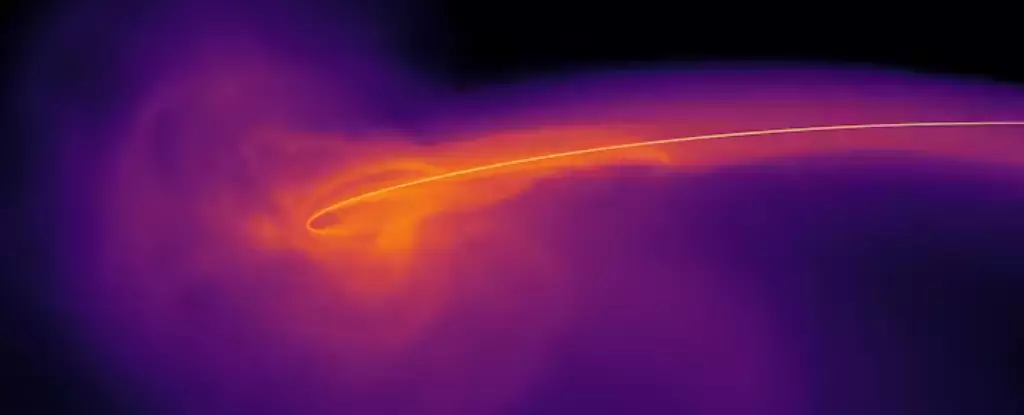Giant black holes in the centers of galaxies are known to devour nearby stars, leading to a spectacular phenomenon known as a tidal disruption event. This process involves the star being spaghettified and torn apart as it approaches the supermassive black hole. Despite being theorized by astronomers like Jack G. Hills and Martin Rees several decades ago, the details of these events have remained a mystery.
While it was initially believed that debris from the star would form an accretion disc around the black hole emitting X-rays, most observed tidal disruption events have been found to primarily emit visible light. The temperatures of the glowing material have also been unexpectedly low, defying the predicted millions of degrees typically associated with hot gas around black holes. Additionally, the size of the glowing material has been estimated to be several times larger than our Solar System, expanding rapidly away from the black hole.
Simulating tidal disruption events presents challenges, as traditional gravitational laws do not apply near supermassive black holes. To account for the effects of Einstein’s general theory of relativity, advanced simulation methods are required. PhD student David Liptai developed a new simulation technique that allowed researchers to study the entire process of a tidal disruption event, from the spaghettification of the star to the final outflow of material from the black hole.
Running simulations of tidal disruption events on powerful supercomputers has provided new insights into the behavior of black holes during these events. Contrary to previous assumptions, only a small fraction of the shredded star’s material actually falls into the black hole. The rest forms a spherical outflow that generates immense amounts of heat, preventing the black hole from consuming more material.
Implications of the New Simulations
The latest simulations have shed light on why tidal disruption events exhibit specific characteristics, such as the rapid expansion of glowing material and the emission of visible light instead of X-rays. The discovery of a mechanism where material smothers the central engine of the black hole, leading to the expulsion of excess matter, provides a new perspective on these cosmic phenomena. Future observations based on these simulations may help astronomers better understand the dynamics of black holes during tidal disruption events.
The recent advancements in simulating tidal disruption events have unraveled the mystery behind these cosmic events. By demonstrating the complex interplay between supermassive black holes and engulfed stars, researchers have provided a clearer picture of how black holes interact with their surrounding environment during these catastrophic events. The concept of a “black hole sun” expanding at a fraction of the speed of light encapsulates the intriguing nature of tidal disruption events and highlights the ongoing efforts to unravel the mysteries of the universe.

